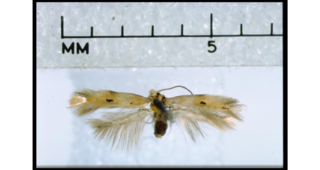
Stigmella insignis is a moth of the family Nepticulidae. It is endemic to New Zealand and has been observed in the Hawkes Bay as well as in the north west of the South Island. S. insignis inhabits montane to subalpine grasslands. The larvae of S. insignis are leaf miners. They likely feed on Celmisia spectabilis. Adults of this species have been observed on the wing in March, November and December.
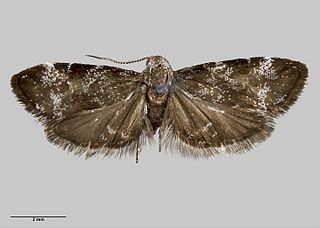
Asterivora tristis is a species of moth in the family Choreutidae. It is endemic to New Zealand and has been observed in Tongariro National Park. Adults of this species are on the wing in January.
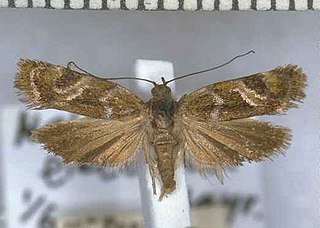
Hierodoris electrica is a moth of the family Oecophoridae. It was described by Edward Meyrick in 1889. It is endemic to New Zealand, where it has been reported from the northern and southern parts of the South Island. The larva of H. electrica has yet to be described. The wingspan is between 15 and 16.5 mm. The ground colour of the forewings is dark brown, with narrow yellow scales overlaying this base colour. The hindwings are brown. The known larval host species is Olearia nummulariifolia.

Hierodoris is a genus of moths in the family Oecophoridae. It was first described by Edward Meyrick in 1912. This genus is only known from New Zealand. In 1988 the genus Taoscelis was synonymised with Hierodoris. In 2005 the genus Coridomorpha was synonymised with Hierodoris.
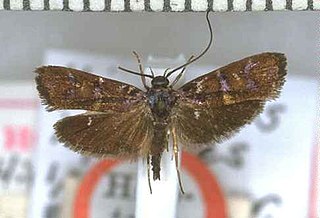
Hierodoris iophanes is a moth of the family Oecophoridae. It was described by Edward Meyrick in 1912. This species can be distinguished from others in its genus by the purple metallic colouration as well as the blue-white mark on its forewings. It is endemic to New Zealand, where it has been recorded from Auckland to Southland. This species inhabits native forest or scrub, with the adults preferring open glades. They are known to be on the wing from November until February and fly during daylight hours, being active on hot sunny days. Larvae feed on the interior of twigs of Prumnopitys ferruginea. The twigs had evidence of oviposition scars of cicadas and the larvae were collected in October after reddish-brown frass indicated their location within the twigs.

Hierodoris callispora is a moth of the family Oecophoridae. It is endemic to New Zealand and can be found throughout the country from south of the Bay of Plenty. This species inhabits native beech forest. Adults of the species have been found where Muehlenbeckia is common. Adults have also been collected from the flowers of Kunzea ericoides. However the larval host is unconfirmed although it has been hypothesised that larvae of this species feed on Kunzea ericoides flowers. Adults of this species can be distinguished by its orange ruff that contrasts with its dark head and thorax. There is a colour form that exists that has orange scales and an orange coloured fringe on the hindwing. Adults have been collected in December and January and are day flying but are also attracted to light at night. A female specimen has been found with a larva in her oviduct suggesting that this species may give birth to larval young.

Hierodoris eremita is a moth of the family Oecophoridae. It is endemic to New Zealand and found in the areas around Aoraki / Mount Cook and Westland Tai Poutini National Park areas. This species inhabits alpine herbfields at altitudes of around 900–1400 m. Larvae are said to have been reared on the leaves of plants in the Celmisia genus. Pupation happens on the host plant. The adults of this species is on the wing between December and June. This species is day flying.

Hierodoris frigida is a moth of the family Oecophoridae. It is endemic to New Zealand and is only found in the South Island. This species is found in two parts of that island, the Nelson/Tasman area and the Mackenzie, Otago and Dunedin areas in the southern part of the island. Although similar to H. iophanes this species can be distinguished as H. frigida has white bands on its forewings and the metallic coloured areas differ in placement. Segment 2 on the labial palp is entirely yellow and enables this species to be distinguished from the similar appearing species H. polita and H. torrida. Larvae have been collected amongst leaf litter from beneath species within the genus Thymus. It prefers open and shrubland habitats and adult moths have been observed flying close to the soil underneath Leptospermum scrub.
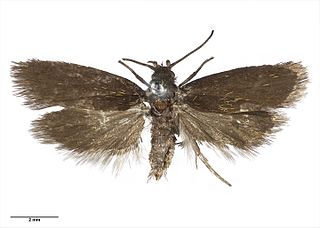
Hierodoris squamea is a moth of the family Oecophoridae. It is endemic to New Zealand and is found in the mountains of Fiordland as well as the Olivine Range in south Westland. This species has a wingspan of between 12 and 13 mm and can be distinguished from similar species as it is very small in size, has a reduced eyespot on its forewings, clearly visible through Scanning Electron Microscope preparations, and has orange-yellow scales overlaying its dark forewing. It prefers open country of tussock grasslands and herbfields at high altitudes. As at 2005 the larvae are unknown. Adults are on the wing in January.

Hierodoris stellata is a species of moth in the family Plutellidae. It is endemic to New Zealand and is found in Fiordland and Dunedin. This species has been found in coastal native forest. Larvae feed on Astelia flower-spikes and adults are on the wing in late December and January. It has been stated that this species belongs to the genus Charixena however this placement has yet to be published. As such this species is currently known as Hierodoris (s.l.) stellata or 'Hierodoris'stellata.
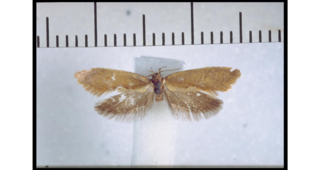
Tingena amiculata is a species of moth in the family Oecophoridae. It is endemic to New Zealand and has been observed in the Nelson, Tasman and Canterbury regions. This species has been collected amongst Hebe species and shrubland at altitudes of up to 4500 ft. It is similar in appearance to its near relatives Tingena basella and Tingena laudata.

Tingena aurata is a species of moth in the family Oecophoridae. It is endemic to New Zealand. The adults of the species are on the wing in November and December.

Tingena decora is a species of moth in the family Oecophoridae. It is endemic to New Zealand and has been collected at Lake Rotoroa and adults are on the wing in February.
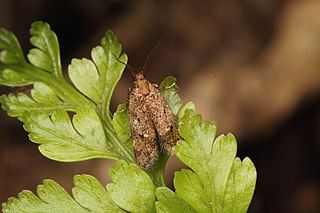
Tingena fenestrata is a species of moth in the family Oecophoridae. It is endemic to New Zealand and has been observed in the South Island. This species has been observed in native forest habitat in December.
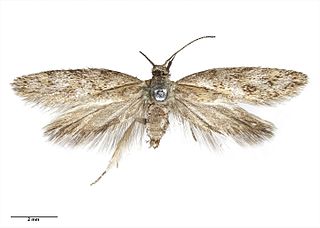
Tingena levicula is a species of moth in the family Oecophoridae. It is endemic to New Zealand.

Tingena opaca is a species of moth in the family Oecophoridae. It is endemic to New Zealand and has been observed in the southern parts of the South Island. Adults of this species are on the wing in December.

Tingena pharmactis is a species of moth in the family Oecophoridae. It is endemic to New Zealand and has been observed in the Nelson, Tasman and Wellington regions. The adults of this species are on the wing in December.
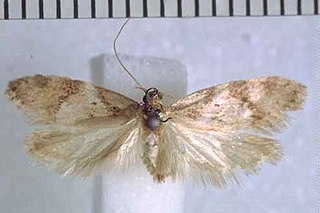
Trachypepla angularis is a species of moth in the family Oecophoridae. It is endemic to New Zealand and has been collected at Lake Rotoroa in the Nelson Lakes National Park in January. This species inhabits mixed native forest.
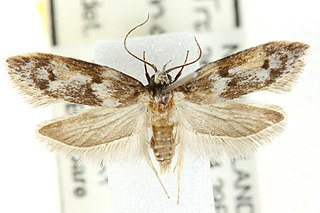
Trachypepla importuna is a moth of the family Oecophoridae and was first described by Edward Meyrick in 1927. This moth is thought to have been introduced to New Zealand, but is presumed to be native to Australia. T. importuna has been collected in both the North and South Islands of New Zealand. It inhabits native scrub and adults are on the wing in January and February. The placement of this species in the genus Trachypepla is regarded as unsatisfactory and in need of revision.

Trachypepla minuta is a moth of the family Oecophoridae first described by Alfred Philpott in 1931. It is endemic to New Zealand and has been collected in Auckland. Adults of this species are on the wing in December. It is distinguishable from similar species as it is smaller in size and darker in appearance than other species in the genus Trachypepla.






















